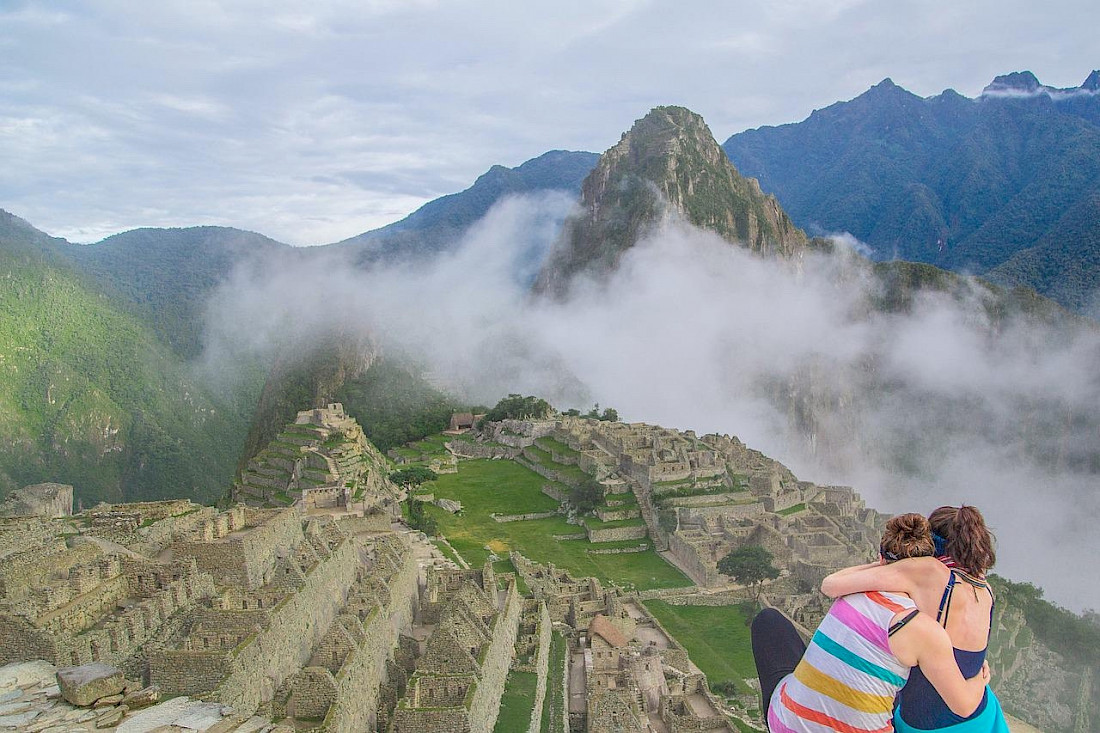Who Built Machu Picchu? Secrets Revealed of this Ancient City
Hidden Secrets of Machu Picchu Revealed
Most of us think that Machu Picchu is the lost city of the Incas hidden in the valley mists of the mighty Andean Mountains. Even though it is nestled in the mists of the Andes, and is an amazing citadel, with more than 200 buildings, the city was never really “lost.” Rather, it was stumbled upon by explorer Hiram Bingham III in 1911, who thought it was the city of Vilcabamba, the hidden capital that the Incas escaped too after the Spanish arrived. Bingham insisted that Machu Picchu and Vilcabamba were one and the same and over the years, Machu Picchu became the lost city of the Incas, a mantle it still wears proudly today.
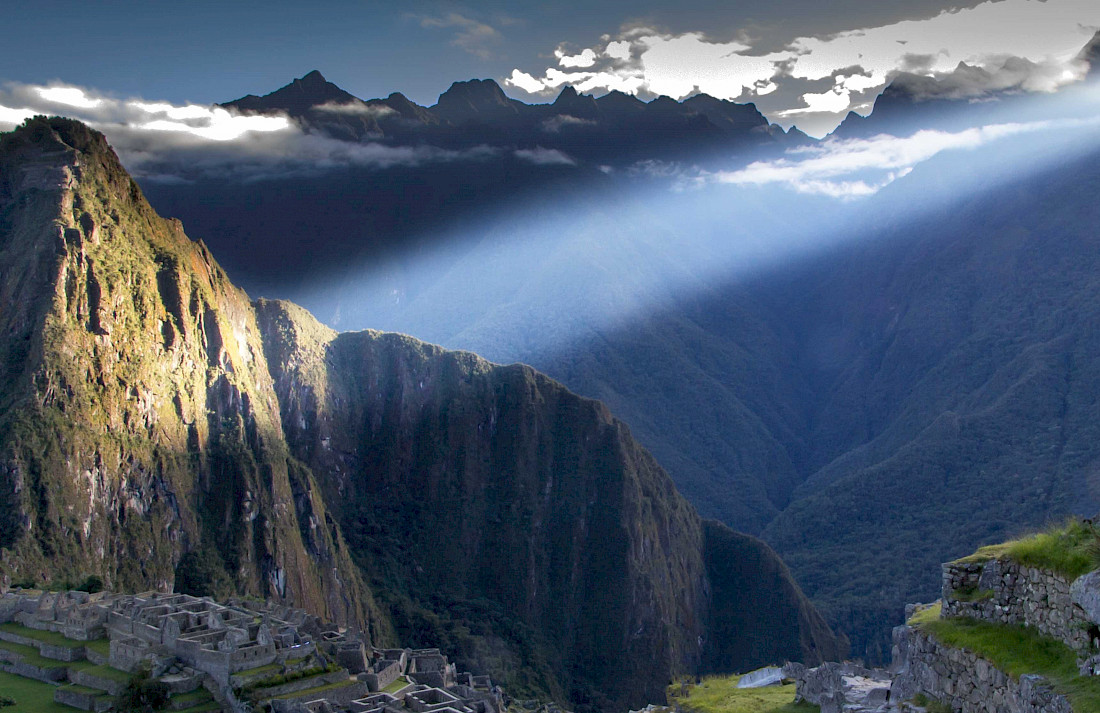
In fact, it wasn’t until 1964 that Vilcabamba, the secret mountain stronghold where the Incas hid in the 16th century from the Spanish was found, disproving that Vilcabamba and Machu Picchu were the same places. Recent research has cast doubt on whether Machu Picchu was ever really lost at all. In fact, recent theories place it as the final stop of a sacred ancient pilgrimage because recent archeological studies have revealed that Machu Picchu lies at the center of a network of trails, temples, and natural landmarks that align with astronomical events like the solstice and equinox.
What Not to Miss
Machu Picchu is a UNESCO World Heritage Site and is the best example of ancient urban architecture in the world. In 2007, it was named one of the 7 Wonders of the Modern World. This remarkable city shows the Inca Empire at the height of its power.
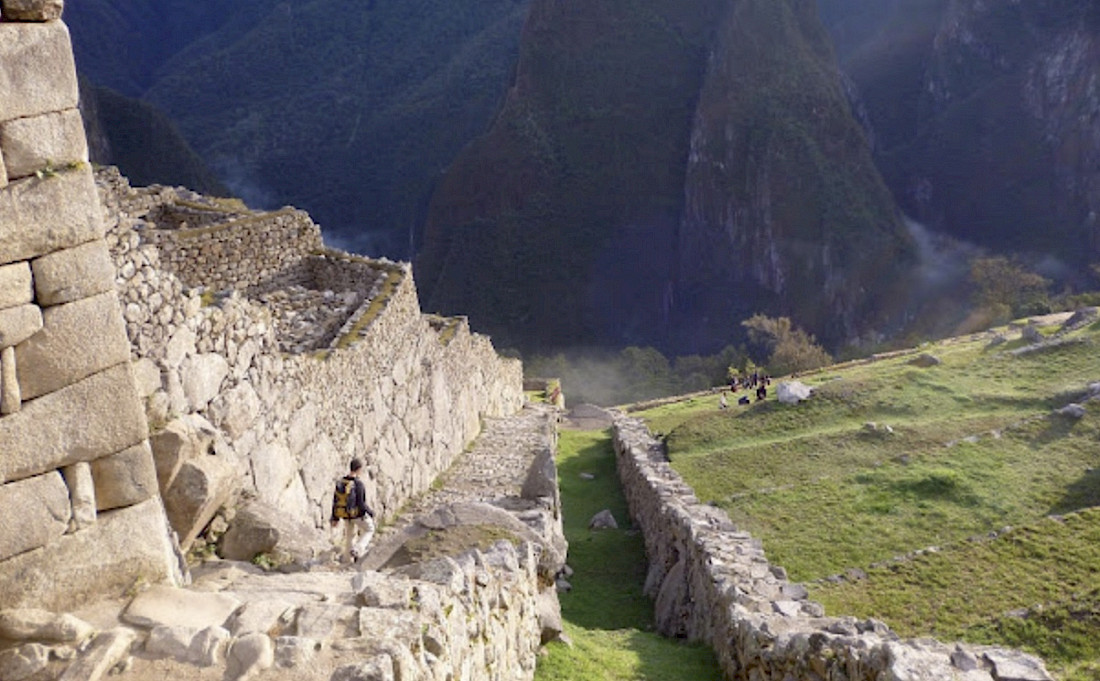
Researchers have recently found that Machu Picchu has been occupied by the Incas as an important religious and urban center since 1420. Machu Picchu, meaning “old hill” is believed to have been constructed by Pachacuti Inca Yupanquil, the 9th ruler of the Inca, living in the 1400s. He is considered to be the greatest Inca ruler because he expanded the empire to the Cuzco Valley and, as far north as Ecuador. Scholars have long debated what the purpose of Machu Picchu was. It may have been built as a fortress, imperial retreat, a symbol of Inca power for the benefit of those conquered, or as ceremonial territory. Many lean toward the use of the city for ceremonial purposes and as a royal estate, because it was difficult to get too, many of the buildings were designed for religious purposes, and it only had the capacity for 1,000 people at its peak.
Emperor’s Estate
In the northeast area of Machu Picchu, there are examples of elite residences that could have been used by aristocrats and priests. The dwelling thought to be where the emperor lived is in the southwest part of the site with a staircase running beside the royal compound leading to a plaza below. Here the emperor had a garden, views, and even a private bath and toilet - the only private one on the site. It has a large room and stairs that lead to a second level. Its design and large size lead archeologists to believe this was the home of the emperor and his family.
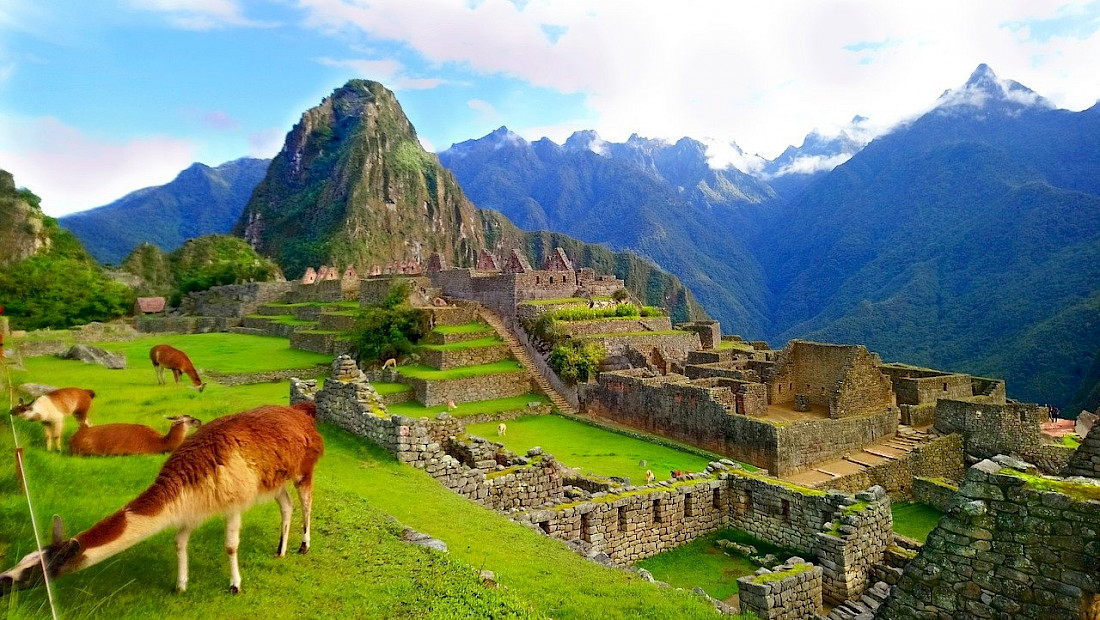
Temple of the Sun
The emperor’s dwelling is located next to another highlight, the Temple of the Sun. This building is similar to the sun temple found at the Inca capital of Cuzco. This round building is considered to be an engineering marvel because the stones were cut, polished, and fit tightly together to allow some natural shifting. Inside there is a large rock that could have served as an alter and beneath the temple is a naturally formed cave that has a boulder-carved stairway near its entrance. It is thought to have been used for religious purposes. The most interesting secret revealed by the Sun Temple happens during the June solstice when the rising sun shines directly into the temple’s windows, in perfect alignment with the window, rock, and sun.
Principle Temple
The Principle Temple located on the northwest side of the plaza is another structure of interest. The Principle Temple is named due to its large size and prominent location in the Sacred Plaza. Archeologists believe that this was the main temple where many public ceremonies took place. The 17 trapezoidal niches in the walls were used to keep scared objects and the stone pegs on the back wall were likely used to hang decorations during festivities. If you look carefully you will see a corner of this magnificent edifice has been damaged due to earthquakes. It is most notable in the rear right-hand corner of the building, where stones have separated and moved downward.
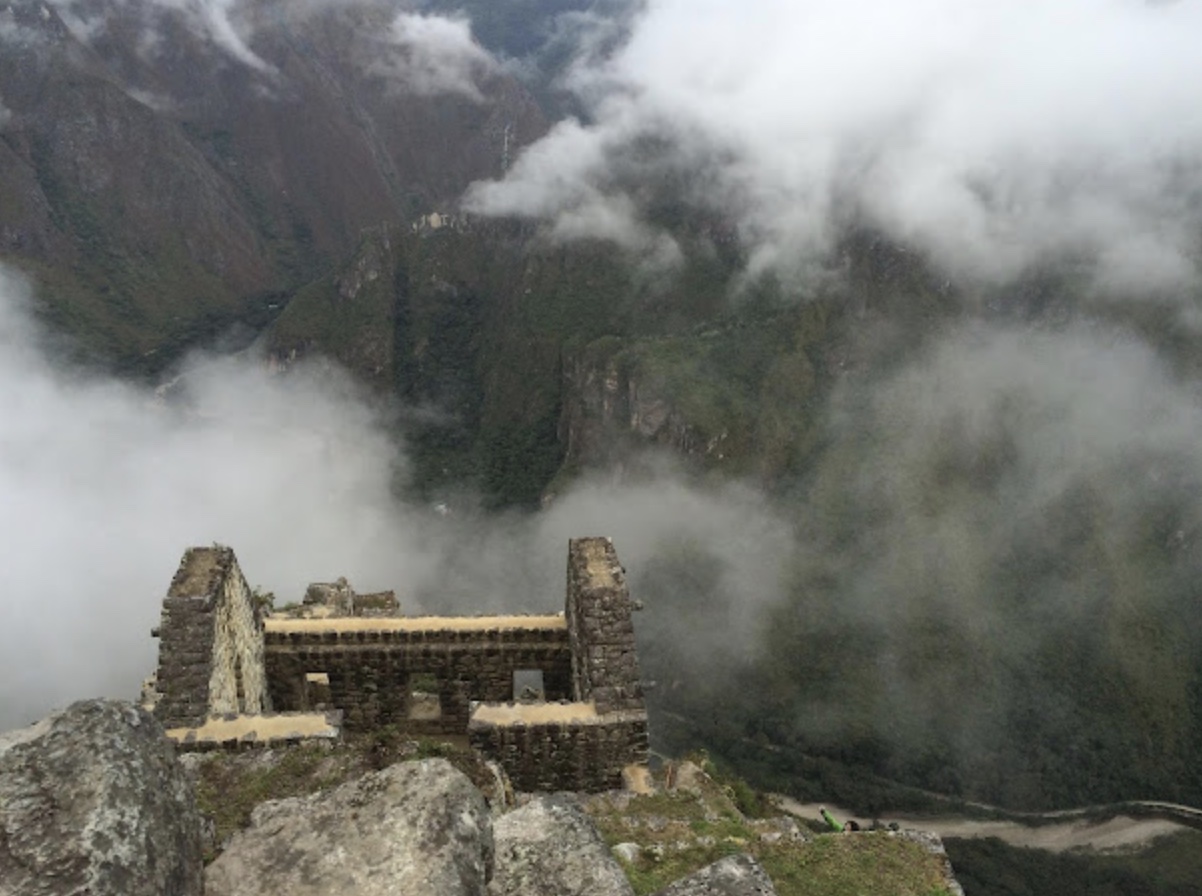
Temple of Three Windows
The Temple of Three Windows served a religious function and offers incredible views of the mountain range. It is thought that they guard the three worlds of the Inca, the heavenly world (Hanan pacha), the earthly world (Kay pacha), and the underworld (Uku pacha). It is believed that these windows also represent the rise of the sun, an important event in daily Incan life.
Temple of the Condor
The Temple of the Condor is another magical spot in the citadel. This structure is located in a cave and has several levels and enclosures. In the main courtyard, there is a carved stone with the image of a condor, a bird sacred to the Incas.
Inti Watana
One of the most mysterious areas, and perhaps, one of the most sacred is Inti Watana, the “hitching post of the sun.” This is the last known structure of its kind in Peru as the others were destroyed by the Spanish in an attempt to erase Inca history. This rock is located in one of the highest places of the citadel. The Inca believed that the stone held the sun in place along its annual journey in the cosmos. At midday on the equinoxes, the sun stands almost above the pillar, casting no shadow. Many archeologists believe that this ritually carved stone served as a sundial and calendar.
On Pachacuti’s death, the city passed to his successors. The site was abandoned for mysterious reasons just before Pizarro and the Spanish arrived. Interestingly, the conquistadors never found this sacred city.
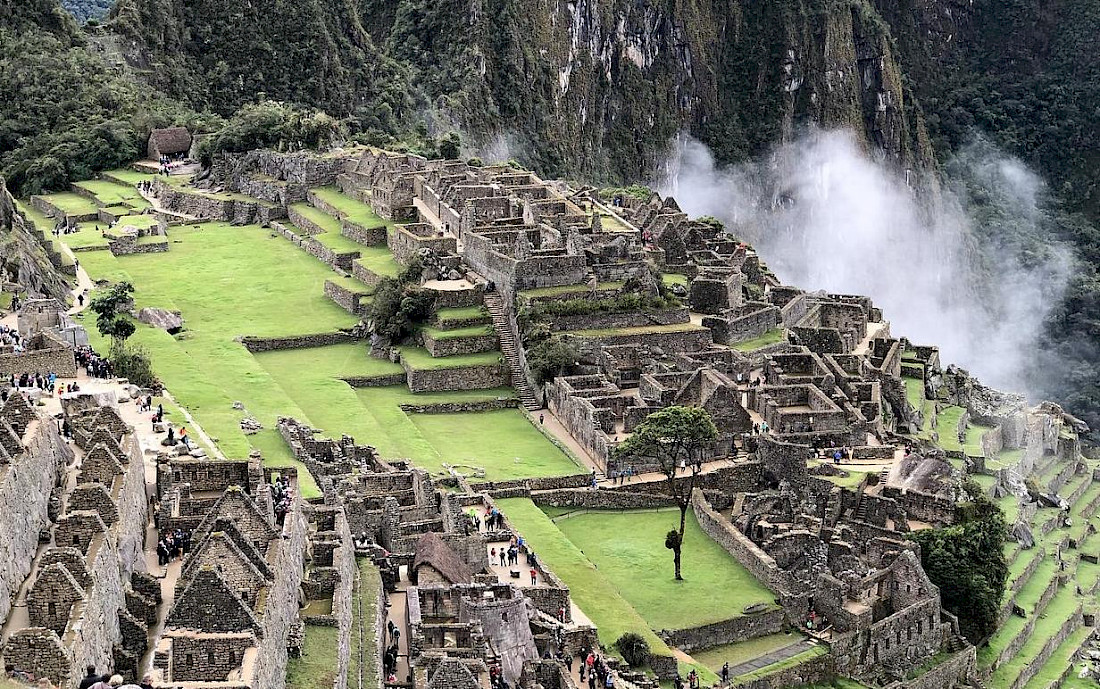
Machu Picchu - an Engineering Wonder
The site we see today is situated on a ridge between the Huayna Picchu and Machu Picchu Mountains of Peru with the turbulent Urubamba River, 2,000 feet below. The Inca left no written record of why they built this site, how they used it or why they abandoned it within 100 years of constructing it. The Inca had no iron or steel, no wheels, and no draft animals. The Incas moved and sculpted the land into a flat surface using rocks to build deep foundations that created drainage. The terraces they constructed, more than 700, preserved the soil enabling them to grow crops, while also serving as a water distribution system, helping to conserve water and stop erosion along the steep slopes.
The way the buildings are constructed is an engineering feat. This fortress of stone is cut so precisely that the stones fit together perfectly making it impossible to this very day to penetrate the mortar between them with a knife. Although the stones are fitted together tightly, they give just enough to be able to withstand frequent earthquakes. It is said that the stones “dance” during earthquakes bouncing through the tremors and falling back into place. If the buildings were not constructed without this ability to shift, Machu Picchu would have collapsed into a jumble of rocks centuries ago.
Peru’s Most Visited Site
Today, Machu Picchu, a UNESCO Heritage Site, is not lost and it is accessible by train from Cuzco or the Inka Trail. It is a must-see for those visiting Peru and is the main attraction that draws people to visit this country. Tours of Distinction’s guided group tour to Peru includes magical Machu Picchu in addition to many other related historical sites.
